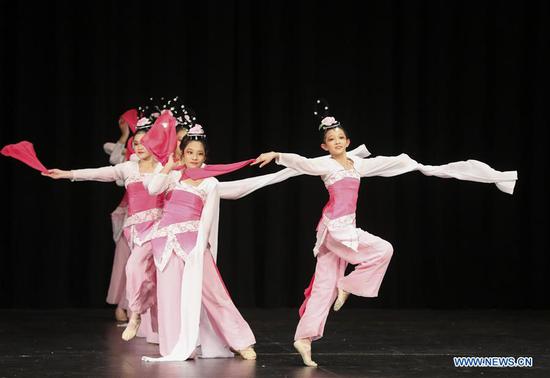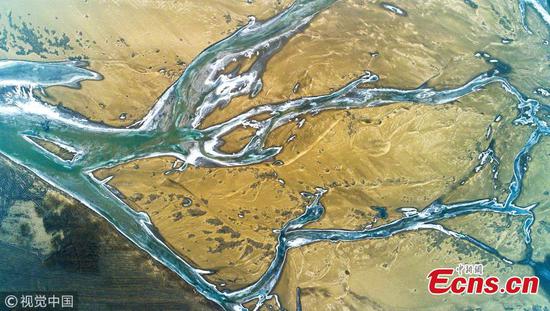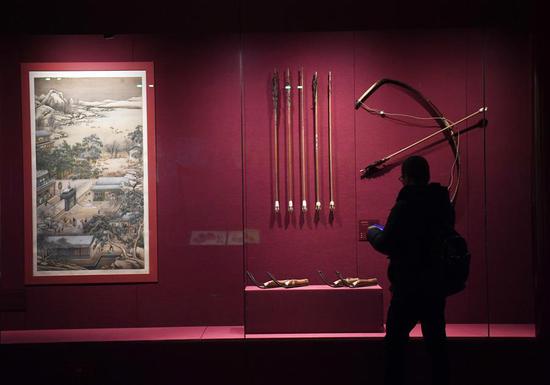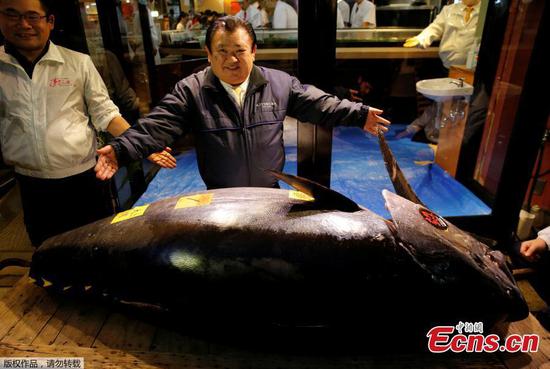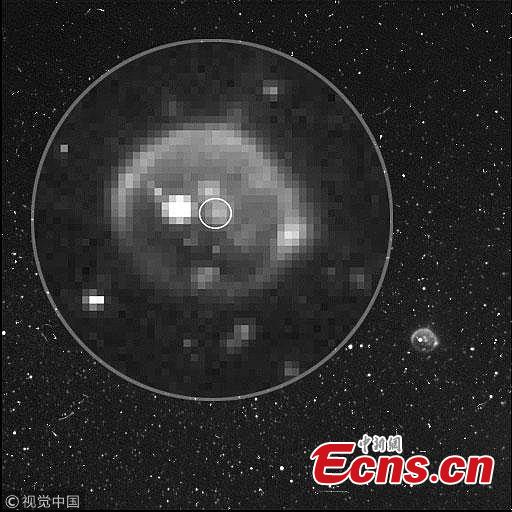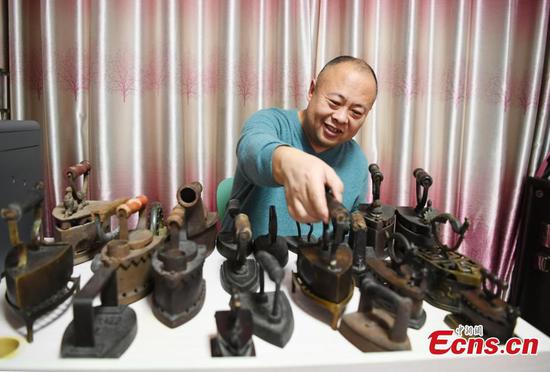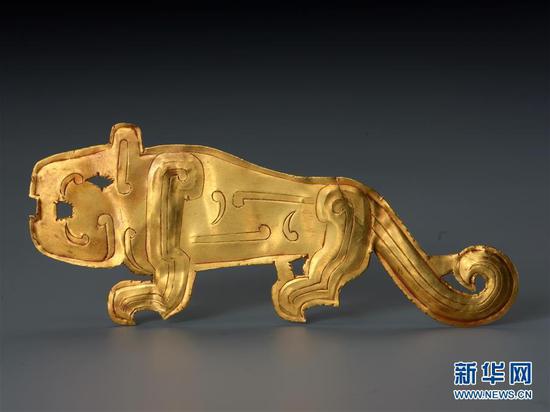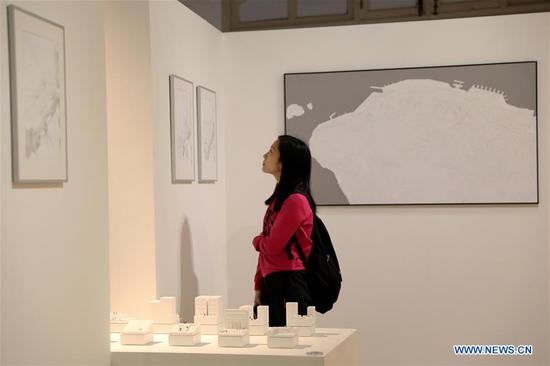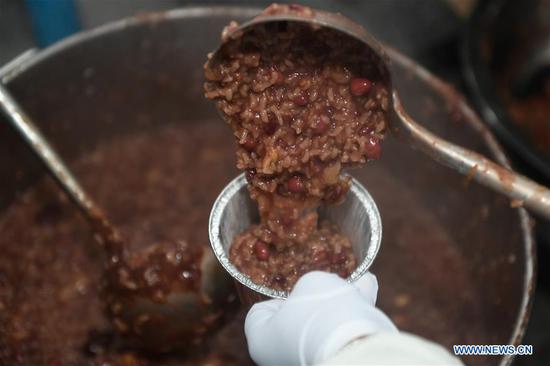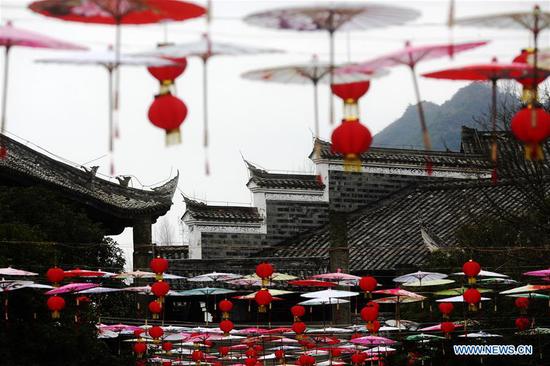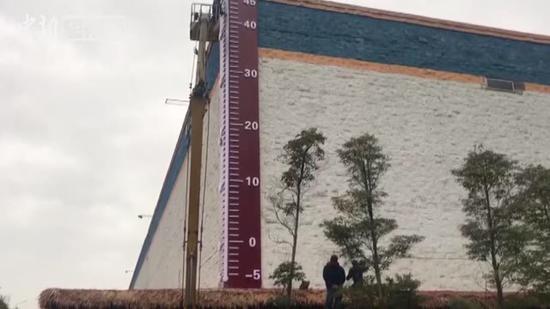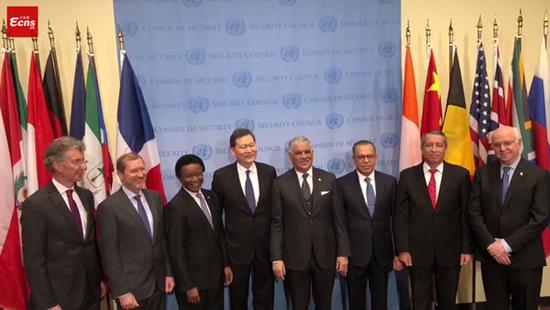
Winners of National Science and Technology Awards take a group photo outside the Great Hall of the People on Tuesday in Beijing. (SHENG JIAPENG/CHINA NEWS SERVICE)
Prize money boost reflects 'care and support Party and nation have for science workers'
More prize money, breakthroughs in basic research and innovation to benefit the nation are the main characteristics of this year's National Science and Technology Awards presented in Beijing on Tuesday.
The prize money for the State Preeminent Science and Technology Award, China's top scientific honor, has been raised from 5 million yuan ($725,000) to 8 million yuan, according to the Ministry of Science and Technology.
The prize money in other categories-such as the State Natural Science Award, State Technology Innovation Award, and State Science and Technology Progress Award-also rose by 50 percent, the ministry said in an online statement.
This first-ever change in the prize for the top award, which began in 2000, "fully embodies the care and support the Party and the nation have for science workers", the statement said.
The overall quality and global impact of the winning projects have improved in recent years, according to the National Office for Science and Technology Awards. China has produced first prize winners of the State Natural Science Award, the nation's highest honor for basic research, for six consecutive years.
This year, Xue Qikun, vice-president of Tsinghua University, received first prize for discovering the quantum anomalous Hall effect in 2013.
That discovery has been globally recognized as one of the greatest in condensed matter physics in recent years because of its potential of creating electronics with reduced energy cost and heat emission. It allows engineers to create even more powerful supercomputers.
"Our discovery could not have been made without the growing national capabilities, robust policy support, scientific and systematic planning, and a thriving environment of innovation, all results of the 40 years of reform and opening-up," Xue said.
China has also consolidated its role as one of the world leaders in chemistry and material science, with many basic research projects in graphene, alloys and nanomaterials winning second prizes in the natural science category this year.
These achievements have spurred a catalysis in industrial production and other advanced materials that are more effective in applications and less harmful to the environment and people's health. Of the 119 foreign evaluations for the winners in the natural science category, 94 percent of foreign scientists said the Chinese projects have great scientific value in their respective fields.
The national awards are also given to innovations that have made profound contributions to the economy and people's health.
Huang Sanwen, the director of the Agricultural Genomics Institute of the Chinese Academy of Agricultural Sciences in Shenzhen, Guangdong province, won second prize in the natural science category for creating better tasting cucumbers.
12Next >>|

Using genetic science, Huang and his team eliminated the bitterness from cucumbers while preserving their nutrients. The cucumber Huang developed has been planted in more than 66,600 hectares across China and has more than 8 billion yuan of commercial value.
"Our team winning the award is testimony to how much the nation cares about using scientific research to benefit the general public," Huang said.
He Jianxing, president of Guangzhou Medical University's First Affiliated Hospital, in Guangdong province, took second prize in the State Science and Technology Progress Award for developing less invasive treatments for lung cancer.
"Lung cancer is a top killer among cancers," He said, adding that about 610,000 Chinese die from the disease each year.
He and his team developed new techniques to effectively administer anesthesia, increased the practicality of minimally invasive surgeries, improved the survival rate for late stage lung cancer and reduced the chances of complications.
The new treatments are now being used in more than 120 hospitals in China. More than 400 foreign physicians, from the United States and Europe, as well as 5,300 doctors from China, have been trained in these techniques.
Five foreign scientists won the China International Science and Technology Cooperation Award for making important contributions to China's science and technology endeavors and development.
The recipients are US metallurgical engineer Jan Miller, UK-US molecular chemist James Stoddart, US material physicist Zhu Yimei, US ocean geochemist Peter Brewer and Swedish bioengineer Sun Licheng.
Jay Siegel, dean of the School of Pharmaceutical Science and Technology at Tianjin University, said cooperative scientific exchange is crucial to building an innovative society in China.
"By exposure to thinking outside your customary ways, you increase the generation of unconventional ideas, which to innovations," he added.
|<













